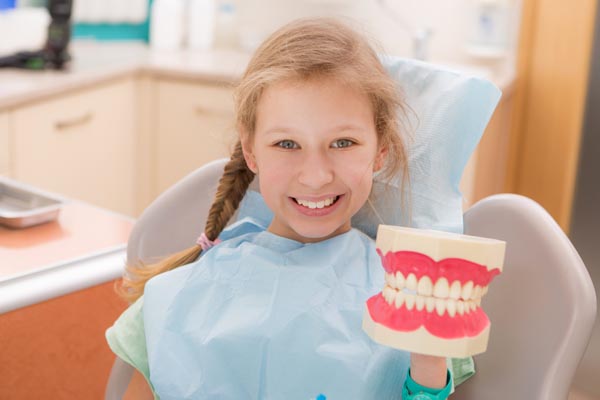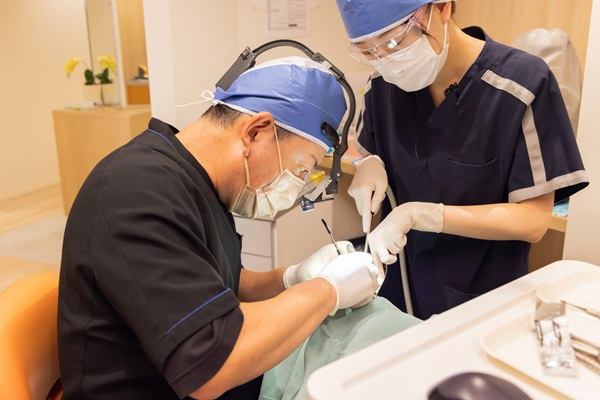Why Dental Sealants are a Good Choice for Kids

In the past 20 years, there has been an increase in awareness regarding the importance of getting dental sealants. However, many parents who did not get dental sealants when they were younger may need to learn about the procedure to understand why they are an excellent choice for kids. A children’s dentist will be able to answer your queries about dental sealants, but necessary information about their purpose and the protection they offer will help you make the right choice.
What Is a Dental Sealant?
A dental sealant is a protective covering used on the teeth to shield them from food debris and bacteria that cause dental decay. Sealants, when applied together with a complete dental care regimen that involves brushing, flossing, healthy diets, fluoride treatment and dental checkup, will help keep the child’s teeth in optimal condition. Although brushing and flossing are essential components of any oral care routine, sealants give extra fortification for the groves on the teeth against pit and fissure decay.
The importance of sealants
Children who have the propensity to consume a high amount of sugary foods and are not efficient with oral hygiene will enjoy the benefits of dental sealants more. They are useful for preventing dental cavities and limit the exposure and occurrence in the mouth. This ensures that children grow up with strong teeth. And for parents, it means fewer expenses on dental procedures like fillings.
Ideally and for maximum protection, children should be taken to the dentist for dental sealants application as soon as the permanent teeth start erupting. This would be when the child is around age six. The number of teeth to receive the treatment depends on how susceptible the child is to dental cavities.
How dental sealants are applied
Sealants are usually applied by a trained children’s dentist during a dental appointment. The treatment takes only a few minutes and is painless, but the child will have to remain still throughout the treatment. No drilling or anesthesia is required for dental sealant application.
- Before the application, the teeth will be cleaned properly and evaluated. The dental hygienist will polish the tooth’s surface to eliminate any occurrence of plaque and food debris in the pits and fissures of the tooth. Next, the hygienist will isolate and clean off moisture
- After drying the tooth, the dental expert will place an etching material to the tooth to etch the tooth’s surface, then rinse off the material and dry the tooth again
- Afterward, the sealant material will be applied to the biting or chewing surface of the tooth using a brush. A special self-curing light will be applied to the tooth for 30 seconds to cure or harden the sealant onto the tooth
- Finally, the dental hygienist and child’s dentist will check the dental sealant to verify its alignment. After the dental sealant hardens on the tooth, it turns to a hard, plastic coating and the tooth will be ready for chewing
Final note
Dental sealants work effectively for preventing cavities and damage to the teeth and improve dental health. They can last up to ten years, so be sure to ask the child’s dentist about the procedure.
Request an appointment here: https://www.lilburnfamilydentistry.com or call Lilburn Family Dentistry at (770) 800-0178 for an appointment in our Lilburn office.
Check out what others are saying about our services on Yelp: Read our Yelp reviews.
Recent Posts
Oral surgery is sometimes necessary to correct issues that are beyond treatment from basic restorative or preventive care. A general dentist trained in oral surgery can often provide a variety of in-office procedures, offering both convenience and continuity of care. These treatments are performed in a comfortable setting, and they support long-term oral health, improve…
A general dentist steps into the role of a restorative dentist when repairing and replacing damaged or missing teeth. Restorative dentistry is so common that almost everyone has had one of these procedures at some time. Here is a closer look at the role of the restorative dentist and the most common procedures in this…
A good restorative dentist can treat dental chipping right away. This type of dental injury can result from biting hard foods. It can also be due to falls, accidents, fights, and sports injuries. Here are the details on how your restorative dentist can rebuild your chipped teeth.This is a quick way to restore a chipped…
Restorative and cosmetic dentistry are dental disciplines that offer similar services. However, they serve distinct purposes and treatment goals. Understanding the differences between a restorative dentist and a cosmetic dentist can help you make informed decisions about your dental care.Restorative dentistry is a dental specialty that focuses primarily on repairing or replacing damaged or missing…


